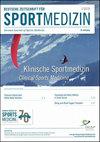精英运动中背痛的心理社会干预:选定研究和最新进展综述
Q3 Health Professions
引用次数: 2
摘要
在一般人群的治疗方案中,对背痛(BP)患者的心理社会干预措施已得到很好的确立。这种干预措施通常被纳入多模式、多学科的项目中,作为慢性腰痛患者的标准治疗方法(LBP;39)。目前心理社会方法在BP管理中的作用是基于更长的历史:Turner(46)已经强调心理技术是多学科疼痛管理的重要组成部分。此外,Turner的早期综述为心理社会干预对各种疼痛综合征的影响提供了证据,而研究对头痛患者进行了评论。后来的综述改进了心理干预对BP有效性的证据,尤其是(36)。尽管如此,普通大学教授Jens Kleinert博士德意志运动会科隆心理研究所健康与社会心理学系Am Sportpark Müngersdorf 6 50933科隆:kleinert@dshs-koeln.de关键任务:背痛、精英运动、疼痛应对、身体概念、动机、恢复›针对背痛患者的心理社会干预是治疗方案中公认的要素,大量评论支持其有效性。考虑到精英运动员背痛的具体情况以及心理治疗对这一人群的影响,研究很少。因此,基于生物-心理-社会范式,本文描述了四种干预方法,具体针对运动员:1)疼痛感知和疼痛管理,2)身体体验和身体概念,3)动机和自我调节,4)压力管理和恢复。对于这四个主题中的每一个,都简要概述了关键研究和现有干预措施。基于这四个主题的概述,描述了作者开发的具体治疗方法。这些治疗的具体目的是1)逐步增加身体和社会活动,同时减少血压和残疾,2)专注于身体体验的积极方面,3)提高患者的自我效率和康复的内在动机,4)促进和监测个人康复活动和放松技巧。目前的干预研究有望提供有关这些发展的效果和可行性的证据。›鼓励未来的研究来检验所开发的干预措施在由受过训练的物理治疗师或初级保健物理学家提供时是否也有效。心理社会干预已经成为背痛治疗的一个组成部分,大量文献综述表明了其有效性。然而,关于竞技运动员背痛的具体方面以及心理社会措施在治疗中的有效性,研究还很薄弱。因此,基于生物-心理-社会范式,本文描述了四种干预方法,具体侧重于1)疼痛管理和疼痛管理,2)身体体验和身体概念,3)动机和自我调节,4)运动员的压力管理和恢复。对四个方面的研究和现有干预方法进行了简要概述。基于这些综述,作者提出了具体的干预方法。这些干预方法特别旨在1)增加身体和社会活动,同时减少疼痛和限制,2)关注身体体验的积极方面,3) 提高自我效能预期和康复的内在动机;4)促进和配合个人康复措施和放松技巧。关于这些干预方法的效果和可行性的证据预计将来自正在进行的研究。未来的研究还将表明,经过培训的治疗师使用这些干预措施是否有效。2018年6月本文章由计算机程序翻译,如有差异,请以英文原文为准。
Psychosocial interventions for back pain in elite sport: a review of selected
research and current developments
Psychosocial interventions in back pain (BP) patients are well established in treatment regimens in the general population. Such interventions are usually embedded in multimodal, multidisciplinary programs as a standard treatment for patients with chronic low back pain (LBP; 39). This current role of psychosocial approaches in BP management is based on a longer history: Already Turner (46) stressed psychological techniques as an essential part of multidisciplinary pain management. Moreover, Turner’s early review provided evidence for effects of psychosocial interventions in a variety of pain syndromes while research commenced in patients with headache. Later reviews improved evidence for the effectiveness of psychological interventions for BP in particular (36). Despite this general Univ.-Prof. Dr. Jens Kleinert Deutsche Sporthochschule Köln Psychologisches Institut Abteilung Gesundheit und Sozialpsychologie Am Sportpark Müngersdorf 6, 50933 Köln : kleinert@dshs-koeln.de SCHLÜSSELwÖRTER: Rückenschmerz, Leistungssport, Schmerzbewältigung, Körperkonzept, Motivation, Erholung KEY wORDS: Back Pain, Elite Sport, Pain Coping, Body Concept, Motivation, Recovery › Psychosocial interventions for back pain patients are well established elements of treatment regimens and numerous reviews support their effectiveness. Research is sparse regarding the specific case of elite athletes suffering from back pain (BP), and the effects of psychological treatments in this population. › Therefore, based on a biopsychosocial paradigm, this article describes four intervention approaches with a specific orientation towards athletes’ 1) pain perception and pain management, 2) body experience and body concept, 3) motivation and self-regulation, and 4) stress management and recovery. › For each of these four topics, a short overview of the key research and existing interventions is given. Based on the overviews of these four topics, specific treatments that have been developed by the authors are described. These treatments particularly aim 1) to gradually increase physical and social activity while reducing BP and disability, 2) to concentrate on positive aspects of body experience, 3) to enhance patients’ self-efficacy and intrinsic motivation for rehabilitation and 4) to promote and monitor individual recovery activities, and relaxation techniques. Evidence concerning the effects and feasibility of these developments is expected from current intervention studies. › Future studies are encouraged to examine whether the developed interventions are also effective when offered by trained physiotherapists or physicians in primary care. › Psychosoziale Interventionen haben sich im Rahmen der Behandlung von Rückenschmerzen als ein fester Bestandteil etabliert und eine Vielzahl von Literaturübersichten zeigt ihre Effektivität. In Bezug auf die speziellen Aspekte von Leistungssportlern und -sportlerinnen mit Rückenschmerzen und die Effektivität von psychosozialen Maßnahmen im Rahmen ihrer Behandlung ist die Forschungslage jedoch schwach. › Daher beschreibt der vorliegende Beitrag auf Basis eines biopsychosozialen Paradigmas vier Interventionsansätze mit spezifischer Ausrichtung auf 1) die Schmerzbewältigung und das Schmerzmanagement, 2) die Körpererfahrung und das Körperkonzept, 3) die Motivation und die Selbstregulation und 4) das Stressmanagement und die Erholung von Sportlern und Sportlerinnen. › Für jede der vier Ausrichtungen wird eine kurze Übersicht über die Forschung und bestehende Interventionsansätze gegeben. Basierend auf diesen Übersichten werden spezifische Interventionsansätze dargestellt, die von den Autorinnen und Autoren entwickelt wurden. Diese Interventionsansätze zielen insbesondere darauf ab 1) die körperliche und soziale Aktivität zu erhöhen während Schmerzen und Einschränkungen verringert werden, 2) die Konzentration auf positive Aspekte der Körpererfahrung zu lenken, 3) die Selbstwirksamkeitserwartung und intrinsische Motivation für die Rehabilitation zu erhöhen und 4) individuelle Erholungsmaßnahmen sowie Entspannungstechniken zu fördern und zu begleiten. Belege hinsichtlich der Effekte und Umsetzbarkeit dieser Interventionsansätze werden von aktuell laufenden Studien erwartet. › Zukünftige Studien sollen darüber hinaus zeigen, ob die Interventionen auch effektiv sind, wenn sie durch ausgebildete Therapeutinnen und Therapeuten eingesetzt werden. June 2018
求助全文
通过发布文献求助,成功后即可免费获取论文全文。
去求助
来源期刊

Deutsche Zeitschrift fur Sportmedizin
Medicine-Orthopedics and Sports Medicine
CiteScore
2.00
自引率
0.00%
发文量
30
审稿时长
>12 weeks
期刊介绍:
The Deutsche Zeitschrift fuer Sportmedizin - German Journal of Sports Medicine has been
founded in 1951 and is dedicated to the biomedical science and clinical practice of Sports
Medicine and its border fields which investigate the influence of exercise, physical training
and sports as well as lack of exercise to healthy and sick people of all age-groups, related to
prevention, diagnosis, therapy, rehabilitation and physical training.
Manuscripts which deal with actual scientific and medical findings, new hypotheses, actual
controversies and problems in real life will be published. Possible Topics are physiology
and pathophysiology of exercise, medical and biological findings, the medical therapy of
exercise-related medical problems, epidemiology of sedentary lifestyle and related
disorders, therapy of sports injuries - especially the conservative postoperative treatment
of injuries -, medical training and rehabilitation medicine, as well as special social,
cultural, psychological and special science-related aspects of the entire scientific field.
 求助内容:
求助内容: 应助结果提醒方式:
应助结果提醒方式:


